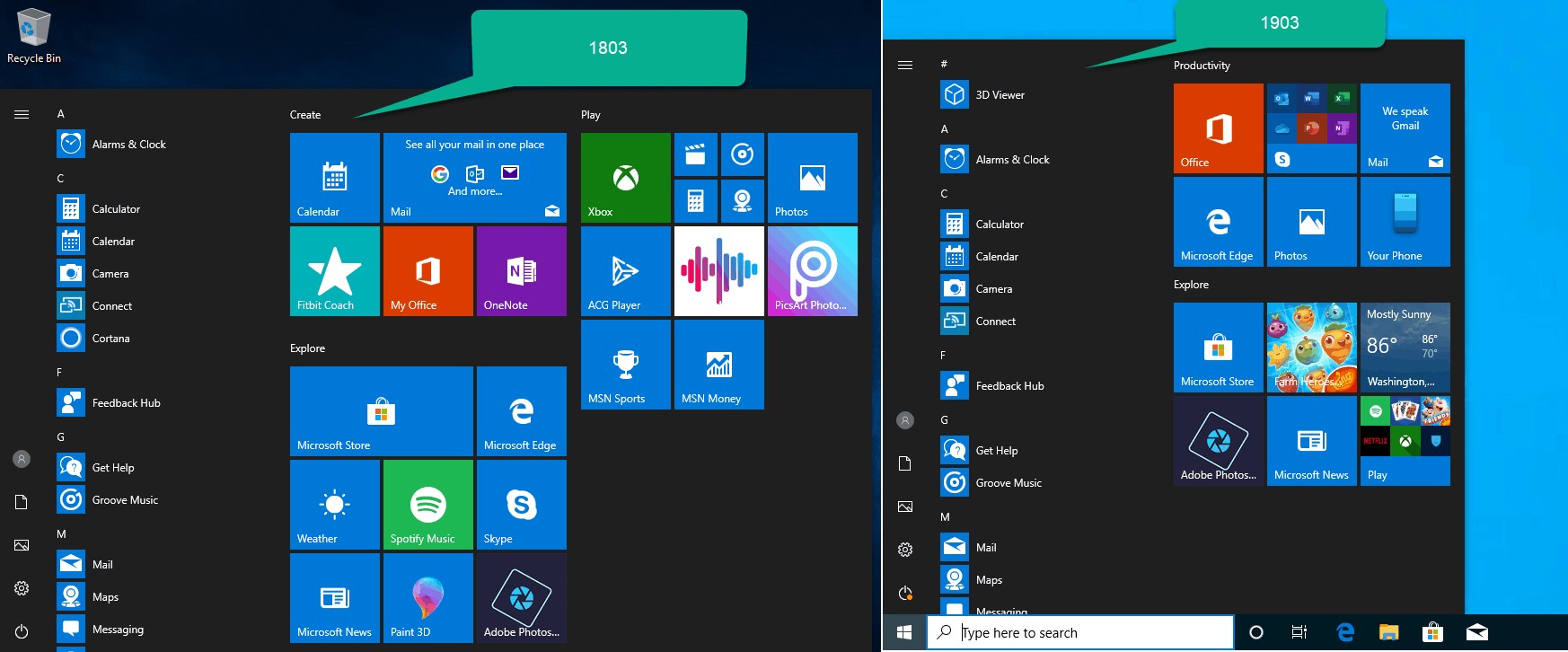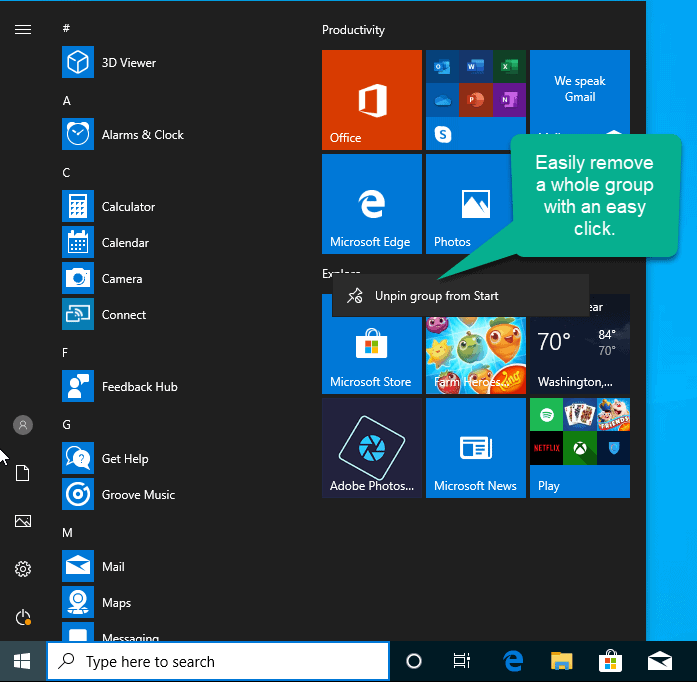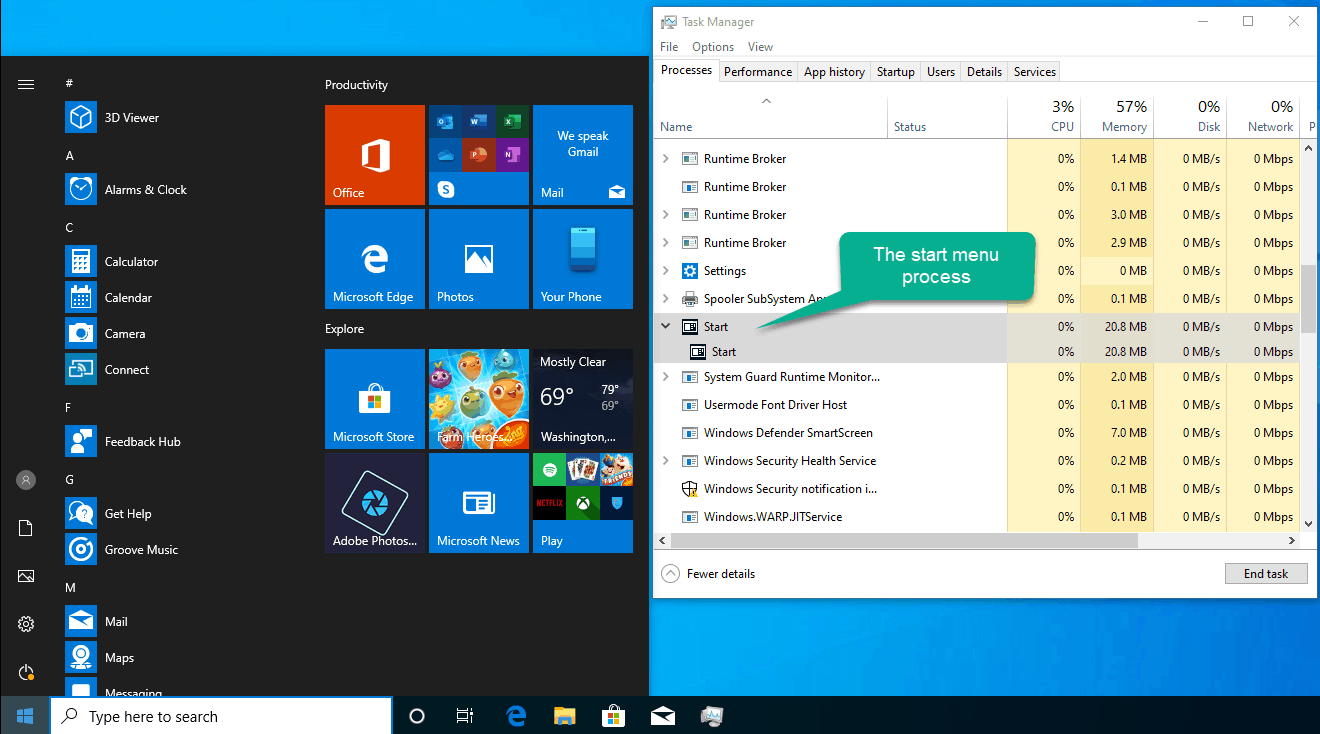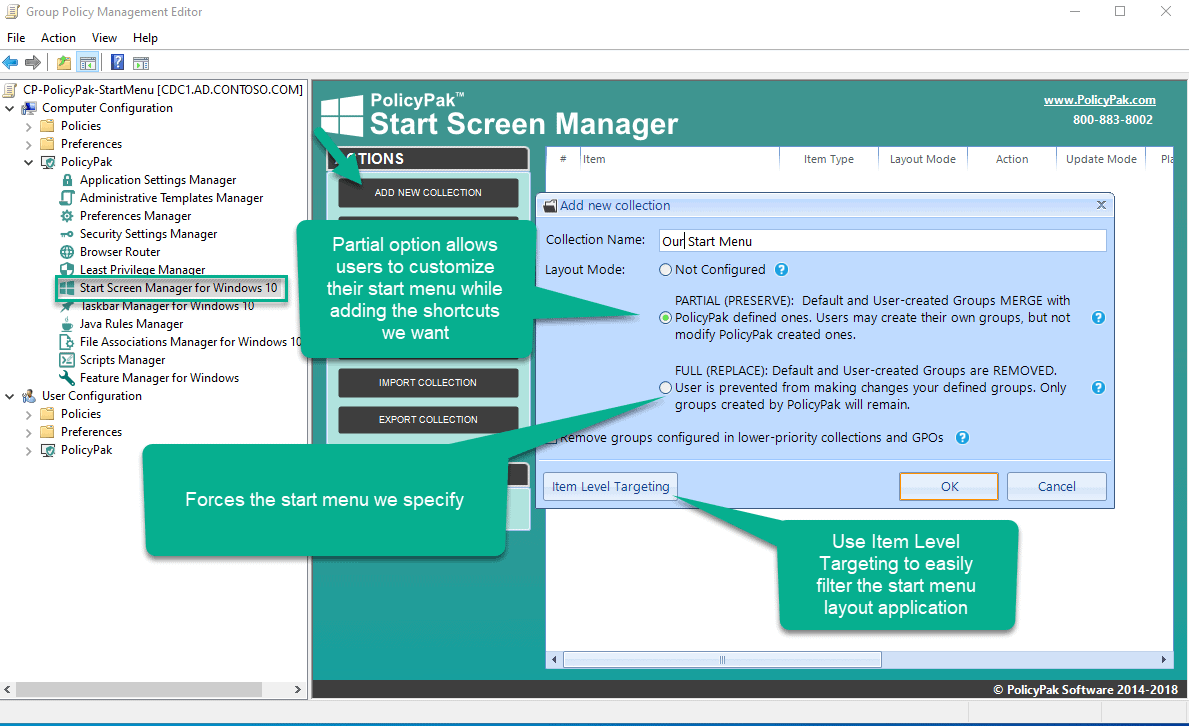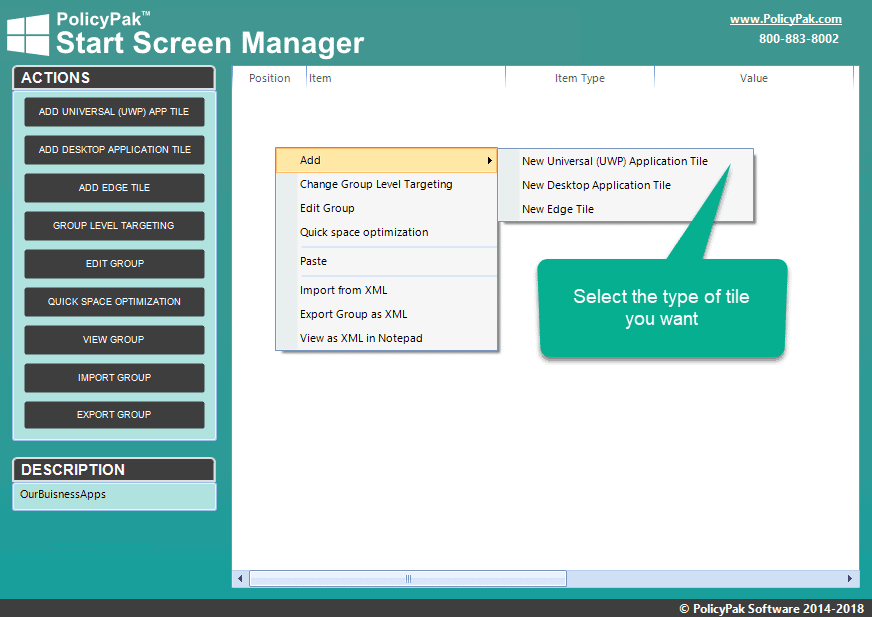Jeremy Moskowitz founded PolicyPak Software after working with hundreds of customers with the same problem they couldn’t manage their applications, browsers and operating systems using the technology they already utilized.
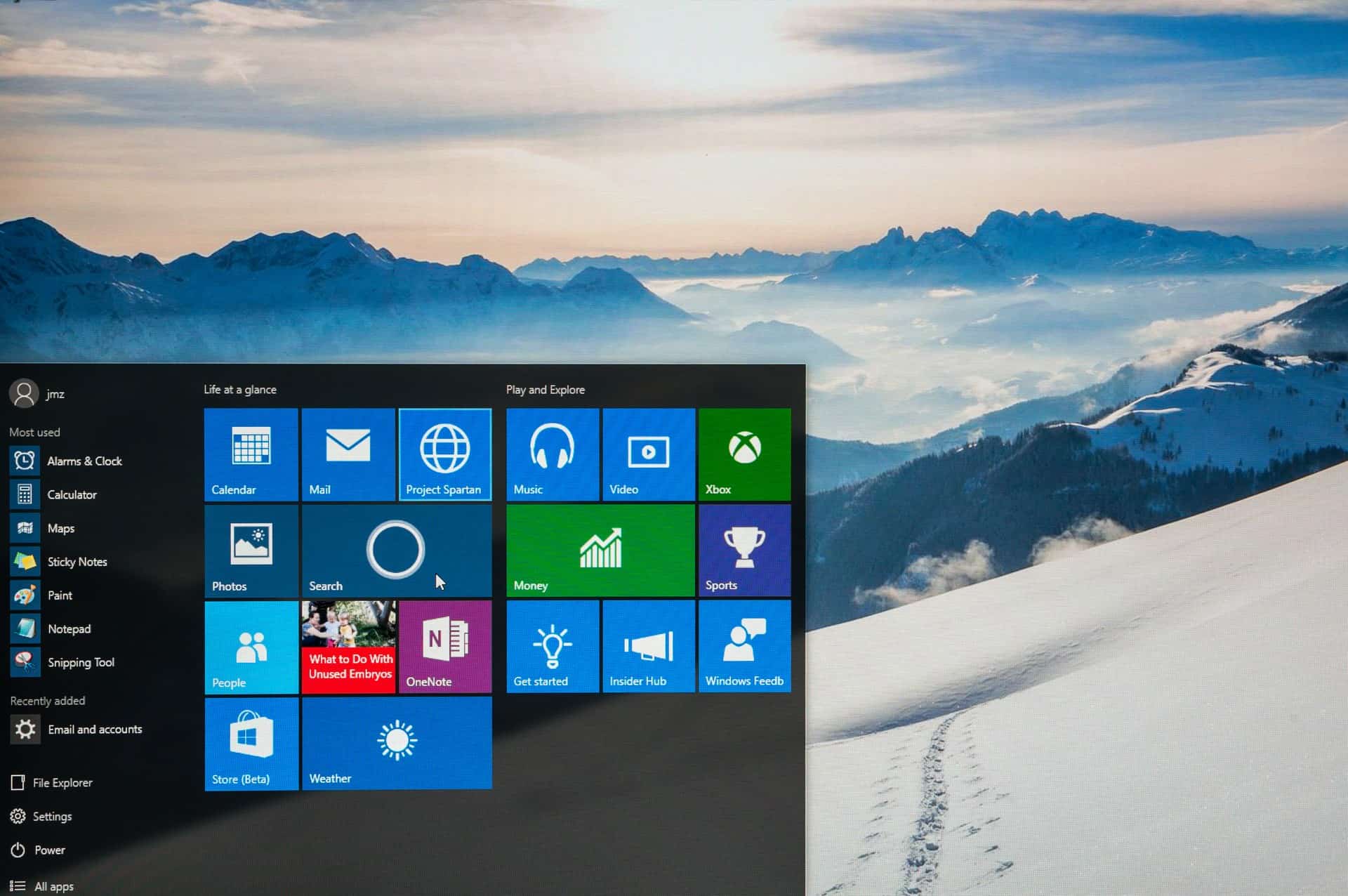
Updates and Changes to the Start menu with Windows 10 v1903 and v1909 and how to manage it like a boss
Windows 10 is evolving with every Semi-Annual Release bringing new features and changes with each revision. The latest release being v1903 and with it changes to the start menu and how users interact with the core of the operating system.
What’s new in v1903
In version 1903 Microsoft has improved and streamlined the way users interact with the start menu. Some of the new features and improvements are:
- Streamlined App Groups
- Unpinning Groups
- Improved Light Mode
- Search Upgrades
- The Start Menu gets it’s own process.
Streamlined App Groups
Let’s take a look at Windows Pro 1803 v 1903 on a fresh install. What you’ll see in these two shots are how Microsoft has removed lots of tiles between 1803 and 1903.
As you can see, Microsoft has streamlined the start menu in 1903.
While the number of default apps has not changed the start menu now has only two groups by default
Productivity is going to be your Office apps, web browser, and mail.
And Explore which will have an assortment of other Apps like the Microsoft Store, Movie and streaming providers and games.
Unpinning Groups
Starting in 1903 not only is the start menu more streamlined with cleaner app groups it also allows an end user to unpin a whole group of apps. This makes it easier for the end-user to customize what they want.
Update Notifications
Starting in 1903 the start menu will also give a friendly reminder that it has updates waiting and that Windows needs to be shut down or restarted to finish the updates. The little orange dot in the lower right of the power menu indicates that updates are ready.
Light Mode Support
While not exclusively a new start menu feature, Windows 10 now features light mode. Making the start menu and the context menus function correctly in light mode. Windows 10 now has its own dedicated light mode setting in the personalization menu.
Search upgrades
Searching from the start menu is now more customizable.
Classic mode offers the traditional search locations normally found in the default Windows index settings like libraries and the Windows desktop and documents.
Enhanced mode will index the whole machine minus the folders that are automatically or manually excluded.
The search settings menu will also display the indexing status, including how many files have been indexed as well as how many pending files there are left to index.
The start menu gets its own process
Starting with v1903 the Windows start is given its own process dedicated to just the Start Menu. Now you can easily restart the start menu process from the task manager if there are any troubles.
So all these new features are great, the look and feel of the menu is more streamlined. Now let’s take a look at managing the start menu.
Managing the Start Menu with the in-box Group Policy Method
Using Group Policy you can deliver a streamlined version of the start menu that you want to present to your users. Let’s take a look, but you might want to read all the way until the end to see a smarter, faster way to handle this task.
Designing your base start menu
In order for an Admin to use the in-box Group Policy method to deploy a crafted Start Menu, they have to, well…craft it themselves. Then after the admin has crafted the start menu, the admin must export the Start Menu as XML and deploy it to your users.
Export Your Layout
Windows 10 has always enabled you to export your Start Menu for later use. This can work under limited circumstances; but let’s see how this can work for some orgainziations with simple needs.
The PowerShell command you want will be Export-StartLayout with the –Path option.
Here’s an example of how to use the cmdlet.
This exports your start menu configuration to XML. Let’s take a look at the XML layout.
The XML has a basic structure as follows.
- The XML is defined at the link provided.
- Then the layout options are specified. In this case, the group width is six tiles, counted in small tiles.
- The Default Group is overridden.
- Groups are specified.
- Tiles in each group are set and arranged.
- The XML is closed out.
Now that the layout is exported it can be deployed via Group Policy.
Deploying the Start Menu with Group Policy
Deploying that start menu via GPO is three easy steps
- Put your StartMenu XML into a shared folder
- Create your start menu GPO and link it to your desired Computer OU.
- Enable the Start layout GPO item
The GPO setting for the start menu located at Computer Configuration | Policies | Administrative Templates | Start Menu and Taskbar | Start Layout
So now everyone who logs into that Computer gets the same start menu you specify.
The start menu can also be controlled by a User or Computer GPO setting here:
User or Computer Configuration| Policies | Administrative Templates | Start Menu and Taskbar| Start layout
If this export method is so great, why isn’t it in widespread use? Here are the problems with the in-box method:
- The deployment becomes “one size must fit all” which doesn’t make sense as soon as you have teams with different needs. As soon as you want to design the Sales start menu vs. the Marketing or IT start menu, things fall apart… fast.
- If an application isn’t present on the machine, but the XML thinks there is, a “black hole” in the Start Menu is created with no indication of what application was supposed to be there.
- There’s no way to visualize the placement of the icons; no graphical editor once it’s in Group Policy in XML format.
- The process requires you to repeat the whole steps over and over again, going back to a machine, re-crafting the start menu, exporting, and getting it back into Group Policy.
There is an easier more flexible option for managing the start menu .. using the PolicyPak Start Screen Manager
PolicyPak Start Screen Manager
If you don’t want to restrict your user’s ability to have some control over their start menu or you don’t want to mess with making XMLs for each of your start menus, then PolicyPak Start Screen Manager is here to make your life easier.
Designing a start menu with Start Screen Manager
Start by creating a new GPO. Then navigate to User or Computer Configuration | PolicyPak | Start Screen Manager
Here we will create a new collection. Each collection can be a different start menu for different sets of staff or computers. Filtered how you choose with Item Level Targeting.
We also have the option to add the group of shortcuts we want and let the user have the ability to edit their start menu, or we can lock the start menu, so only our shortcuts are displayed, adding flexibility and choices to the standard start menu GPO.
Next make the Application groups:
Adding shortcuts to the start menu:
Right-click and choose what type of tile to add to the start menu group.
As an example, here’s what it looks like for Registered applications.
Next you will select the position and size. The position will auto place in the next open spot or you can custom set it.
The result Is that now our Start menu group shows up but the Users can also customize the start menu to their liking. They can make their own groups and add their own apps… if that’s your desire.
Final Thoughts
PolicyPak makes managing the start menu easy and doesn’t restrict end-users from putting their personal touch on the start menu.
See more information and videos about PolicyPak Start Screen Manager

